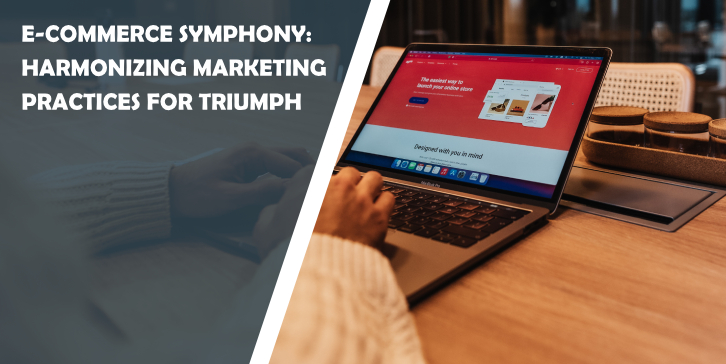Newer isn’t always better in ecommerce marketing, and that’s where many online retailers go wrong. They latch onto the latest tactics to gain some buzz, investing arbitrary sums in rolling them out with no clear goals beyond “selling more products,” and lacking any real understanding of what their strengths and weaknesses are.
Their fundamental mistake is assuming that there’s inherent value in following the zeitgeist. That a new and much-discussed channel must be incredibly useful. Because why else would people be talking about it so much? As it happens, things aren’t anywhere near that simple. For instance, influencer marketing might be huge at the moment (and for a good reason), but that doesn’t mean it’s going to prove useful for your business.
What ecommerce marketers should care about is ROI. Not what’s new, or flashy, or creatively inspiring. But what consistently brings in leads drives conversions, and returns value far more significant than what has put it into it. And if you’re looking for ROI, look no further than email marketing. The reigning, defending, unsurpassed (though sadly disputed) ecommerce marketing champion.
Indeed, a 2015 study found that email marketing had an ROI of $38 for each $1 spent. So why does email marketing (one of the oldest forms of digital marketing) have such a high ROI?
That’s a fairly reasonable question — allow me to explain:
It Can Be Very Finely Targeted

In marketing, the better the targeting (, the more relevant the audience), the better the results — and the level of targeting that can be achieved with email marketing even goes beyond what Facebook can offer through its advertising platform (though there are caveats). Yes, Facebook allows advertisers to get highly granular with targeting people fitting specific profiles. But they don’t get to target specific people or businesses.
With email marketing, though, you can get that specific if you want to. You can mix the scattershot approach (of, say, social media marketing) with the 1-on-1 targeting of account-based marketers. It takes time to build up a strong mailing list naturally (buying lists is a very bad idea), but you’ll collect emails through online sales anyway, and once you’ve finally reached that point, you can take complete control over the content emailed to any given customer — ensuring that it’s optimally relevant and compelling.
It’s 100% Customizable
Even the most generous social media advertising platforms have various limitations on what you can do with your choice of an ad. You might be forced to use images with specific aspect ratios. Have limitations on how much text you can overlay, and need to include links in particular formats. Want a bold CTA? You’re stuck with whichever type has been provided for you.
An email, however, is a blank canvas for you to fill; however, you see fit. You can make it conform to every last element of your business branding, carrying over your color schemes, fonts, shapes, styles, and logos. You can create a punchy single-screen experience, or offer up a long-form story that scrolls down for ten pages. The CTAs can be positioned, however (and in whichever parts) you prefer. You can embed video, or include animation elements. It’s up to you.
It’s Great for Multi-Part Marketing
The marketing funnel can be lengthy and complicated. Mainly when you’re aiming to sell a high-end product to people who’ll take a lot of convincing. Ecommerce marketing often benefits, Then, from multi-part marketing: aiming to slightly increase interest with every part. Until the recipient eventually feels sufficiently persuaded to take action.
Due to how richly customizable emails are, it’s possible to assemble a formidable series of marketing emails, with each one following on naturally from the last. For example, the first can cryptically allude to a problem. The second can give a brief glimpse of the product. The third can fully reveal it to the now-interested recipient.
That type of series would be so much harder to implement using social media marketing — and each email can only be sent out to those who opened the previous one in the series, ensuring optimal efficiency.
It’s Ideal for Triggered Automation

One of the biggest strengths of email is how comprehensively it can be tracked through analytics. Every last element of an email can be tagged in any way you see fit — if you want to know whenever someone clicks on your first CTA, or your second CTA, or watches an embedded video, or clicks away from the email entirely, you can find it out.
You can use this information in combination with general customer data to achieve timely email triggering: Setting specific emails to be sent at specific times or in particular circumstances. You’ll need to pick a suitable email marketing platform, of course, but there are plenty available, and they’re all perfectly compatible with WooCommerce. Catch someone at precisely the optimal time, and the likelihood of them converting will be significantly higher.
It’s Extremely Affordable, Even at Scale
Last, but not least, email marketing manages to achieve such remarkable ROI for ecommerce sellers because it’s so very cheap to implement. On the right plan with a tried-and-tested service. You can get unlimited email sends for a very reasonable monthly cost. Allowing you to send thousands upon thousands of emails at no additional cost. Instead of spending $1 for every social media ad click.
The biggest ecommerce sellers do as much as they possibly can with their emails, sending out consistent streams of content, promotions, product/service updates, and incentivizing emails (featuring vouchers, coupons, special deals, etc.). Past a certain point, it doesn’t matter whether you have a thousand customers subscribed or ten thousand. You can ensure that everyone receives relevant content regularly.
For all of these reasons, and likely various more, email marketing still gets the nod as far as basic ROI goes. It’s powerful, flexible, customizable, and affordable — and it doesn’t hurt that email is still used heavily for business. Making it harder for people to breeze through their inboxes in the way they breeze through social media feeds or SERPs.
Are you making the most of email marketing for your ecommerce store? If you feel you could be doing more — or you’re not using it at all. Then this is your time to turn things around.





Comments are closed.